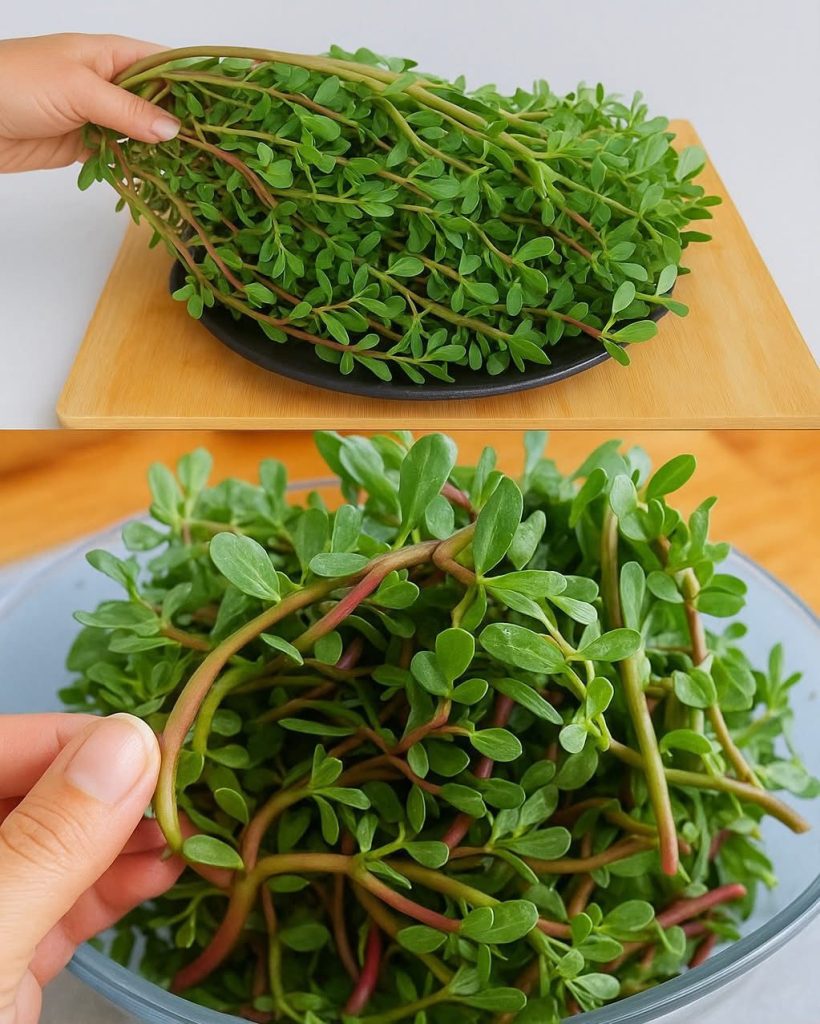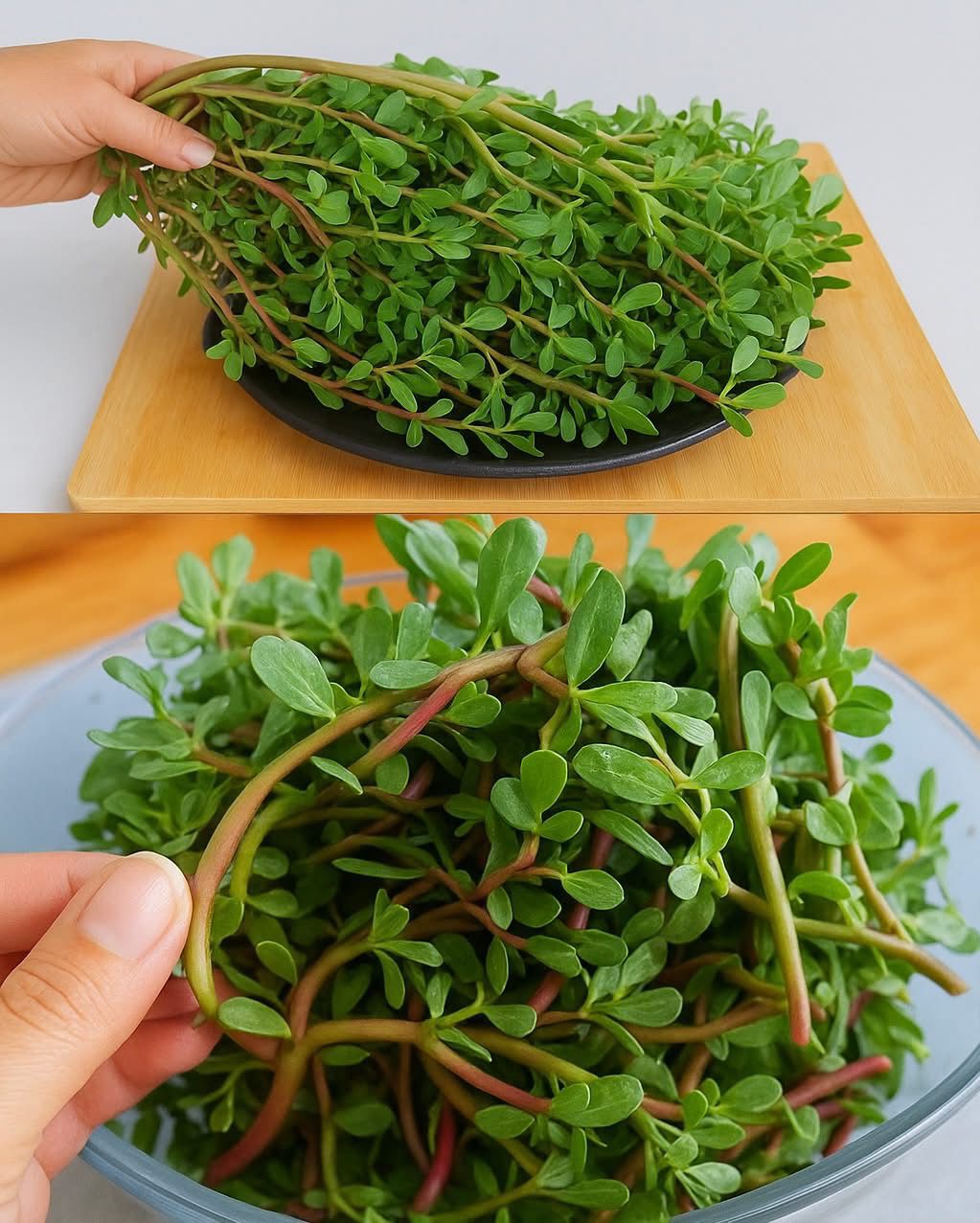Purslane Stew A Nutritious Wild Delight

Introduction
Purslane, also known as verdolagas, kulfa, or pigweed, is a succulent green with a slightly tangy, lemony flavor. Though often overlooked, this humble plant is a nutritional powerhouse and a culinary gem in many world cuisines, especially Middle Eastern, Indian, Mexican, and Mediterranean cooking.
In this recipe, we’ll craft a hearty Purslane Stew, rich in nutrients, earthy flavors, and soul-warming goodness.
Ingredients
For the stew:
- 3 cups fresh purslane leaves and tender stems, thoroughly washed
- 1 large onion, finely chopped
- 2 tomatoes, chopped
- 3 cloves garlic, minced
- 1 cup chickpeas or lentils, soaked and pre-cooked (optional)
- 1 medium potato, peeled and cubed
- 2 tbsp olive oil or ghee
- 1 tsp ground cumin
- 1/2 tsp turmeric
- 1/2 tsp black pepper
- 1 tsp salt (adjust to taste)
- 1 tbsp lemon juice (or 1/2 tsp dried sumac)
- 2-3 cups vegetable broth or water
Optional Add-ins:
- 1/2 tsp paprika or chili flakes
- 1 tbsp pomegranate molasses (for a tangy depth)
- A handful of fresh cilantro or dill for garnish
Instructions & Methods
1. Prep the Purslane
- Rinse purslane thoroughly to remove sand and dirt.
- Trim tough lower stems; keep tender ones along with the leaves.
2. Sauté the Aromatics
- In a deep pot, heat olive oil.
- Add chopped onions and sauté until golden.
- Stir in garlic, cumin, turmeric, and black pepper. Cook for 1 minute until fragrant.
3. Build the Base
- Add chopped tomatoes and let them soften into a thick paste.
- Toss in potatoes and optional chickpeas/lentils.
- Stir for a few minutes before adding broth.
4. Simmer
- Bring to a boil, then reduce heat to a simmer.
- Cook until potatoes are tender, about 15–20 minutes.
5. Add Purslane
- Gently stir in the cleaned purslane.
- Cook for another 5–7 minutes until wilted but still vibrant.
- Adjust seasoning. Finish with lemon juice or sumac.
6. Serve Warm
- Garnish with cilantro or dill.
- Serve hot with flatbread, rice, or crusty bread.
History of Purslane
Purslane has been consumed for over 2,000 years, known to the Greeks and Romans. It’s believed to have originated in Persia and India and later spread to the Mediterranean, Africa, and eventually the Americas. It was commonly foraged and used in stews, salads, and medicinal concoctions.
In Mexican cuisine, it’s called verdolagas and cooked with pork or beans. In Turkish and Middle Eastern cooking, it’s added to yogurt sauces or sautéed with eggs and onions.
Health Benefits of Purslane
- Rich in Omega-3 Fatty Acids (especially ALA) – rare in leafy greens.
- High in Vitamins A, C, and E
- Loaded with Antioxidants like glutathione and betalain pigments
- Supports Heart Health – reduces bad cholesterol
- Anti-Inflammatory Properties
- Hydration & Gut Support – due to high water and mucilage content
Formation of Purslane
Purslane grows low to the ground with fleshy leaves and reddish stems. It’s a succulent, thriving in poor soil and dry climates. It can be wild-foraged or grown in pots or garden beds. It’s best harvested in the morning when the leaves are plump and fresh.
Lovers of Purslane
- Chefs & Foragers: Love its unique tangy taste and versatility.
- Vegans & Vegetarians: A valuable plant source of Omega-3s.
- Grandmothers Worldwide: For stews, soups, and traditional healing tonics.
- Nutritionists: Recommend it as a “super green.”
Nutrition Information (per serving)
| Nutrient | Approx. Amount |
|---|---|
| Calories | 160 kcal |
| Protein | 5 g |
| Fiber | 6 g |
| Fat | 5 g |
| Carbohydrates | 20 g |
| Omega-3 Fatty Acids | 400 mg |
| Vitamin A | 35% DV |
| Vitamin C | 40% DV |
| Iron | 15% DV |
| Magnesium | 12% DV |
Conclusion
Purslane Stew is more than a simple meal — it’s ancestral nourishment, an embrace from generations past. Whether you forage it or find it at a local market, this wild green brings nutrition, culture, and healing to your bowl.
For the Lovers of Wild Greens…
This recipe is a love letter to:
- Those who honor the earth’s bounty
- Those seeking wholesome comfort food
- Those blending ancient traditions with modern nutrition
